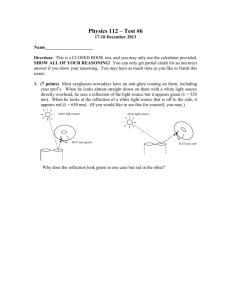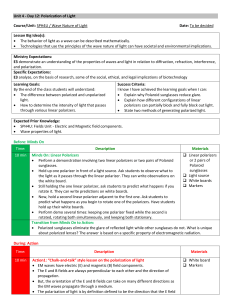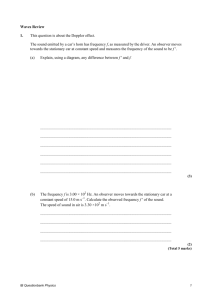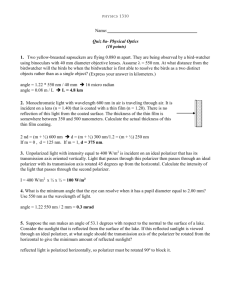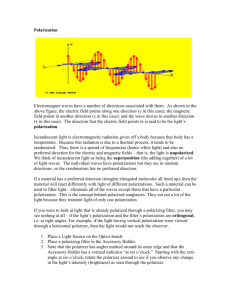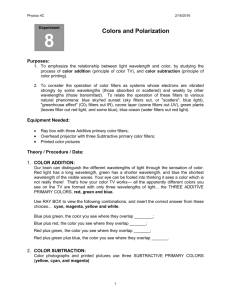Polarization Worksheet: Physics Problems & Concepts
advertisement
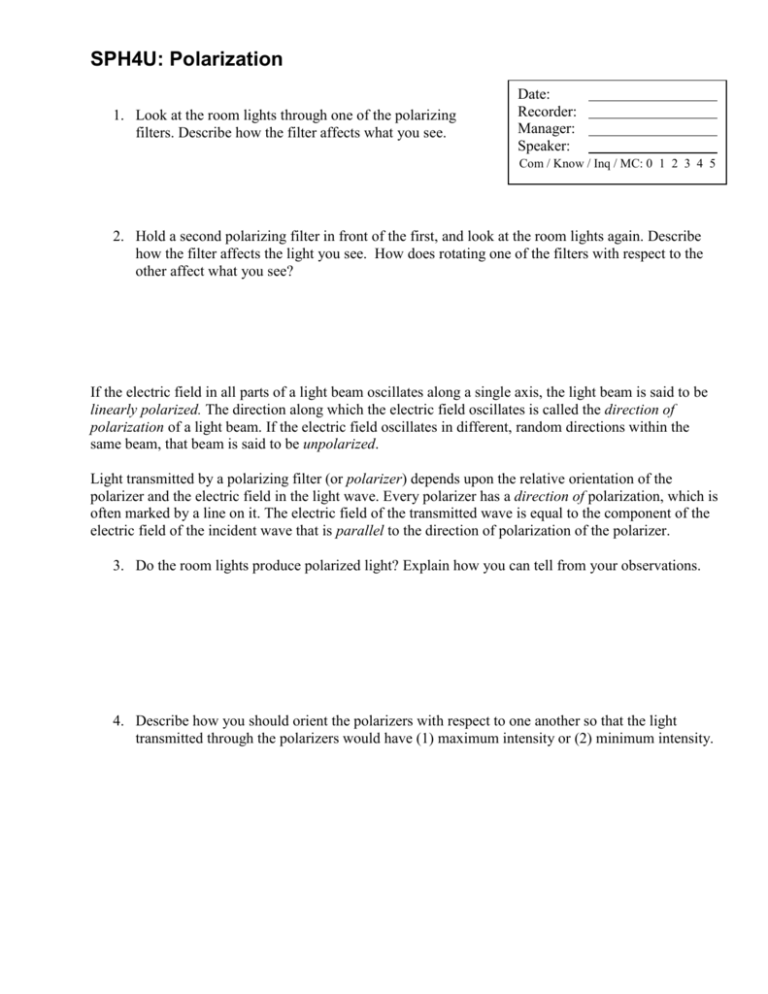
SPH4U: Polarization 1. Look at the room lights through one of the polarizing filters. Describe how the filter affects what you see. Date: Recorder: Manager: Speaker: Com / Know / Inq / MC: 0 1 2 3 4 5 2. Hold a second polarizing filter in front of the first, and look at the room lights again. Describe how the filter affects the light you see. How does rotating one of the filters with respect to the other affect what you see? If the electric field in all parts of a light beam oscillates along a single axis, the light beam is said to be linearly polarized. The direction along which the electric field oscillates is called the direction of polarization of a light beam. If the electric field oscillates in different, random directions within the same beam, that beam is said to be unpolarized. Light transmitted by a polarizing filter (or polarizer) depends upon the relative orientation of the polarizer and the electric field in the light wave. Every polarizer has a direction of polarization, which is often marked by a line on it. The electric field of the transmitted wave is equal to the component of the electric field of the incident wave that is parallel to the direction of polarization of the polarizer. 3. Do the room lights produce polarized light? Explain how you can tell from your observations. 4. Describe how you should orient the polarizers with respect to one another so that the light transmitted through the polarizers would have (1) maximum intensity or (2) minimum intensity. When two polarizers are oriented with respect to one another such that the light is at a minimum intensity, the polarizers are said to be crossed. 5. Suppose that you had a polarizer with its direction of polarization marked. How could you use this polarizer to determine the direction of polarization of another unmarked polarizer? Explain your reasoning. 6. A beam of light is incident on a polarizer, as shown in the side view diagram below. The direction of polarization of the light makes an angle with respect to the polarizer’s direction of polarization. (see Front View diagram.) The amplitude of the electric field of the incident light is Eo. The magnetic field (not shown) has an amplitude Bo. Write an expression for the amplitude of the transmitted component of the electric field. Incident light Polarizer Direction of polarization of filter E vector Side View Front View 7. Answer this question using your results from question #6. A beam of light (polarized in 1 direction) is incident on a polarizer oriented at an angle of (a) 0 degrees, (b) 90 degrees, and (c) 45 degrees to the light’s direction of polarization. What is the amplitude of the transmitted electric field in each case? What is the intensity of the transmitted light in each case? (Note: the intensity of the transmitted light is the square of the amplitude.)




